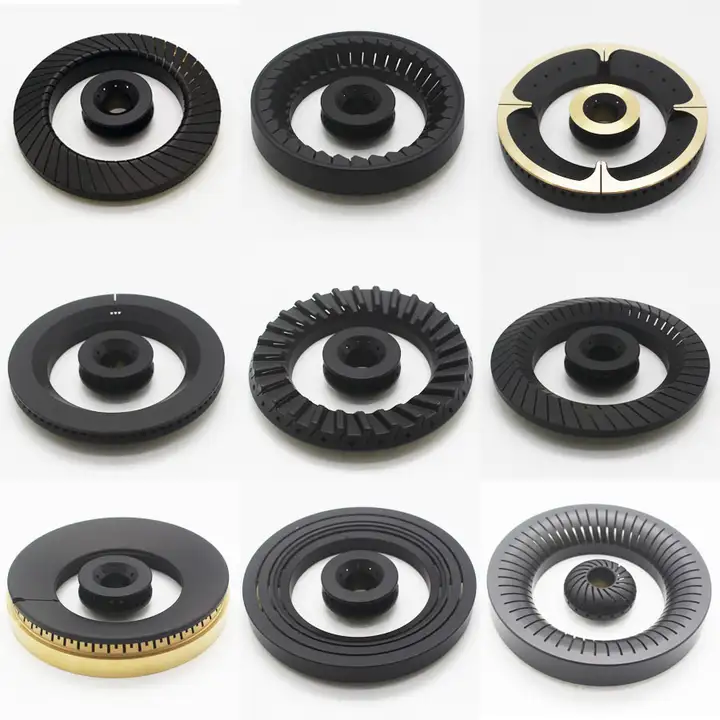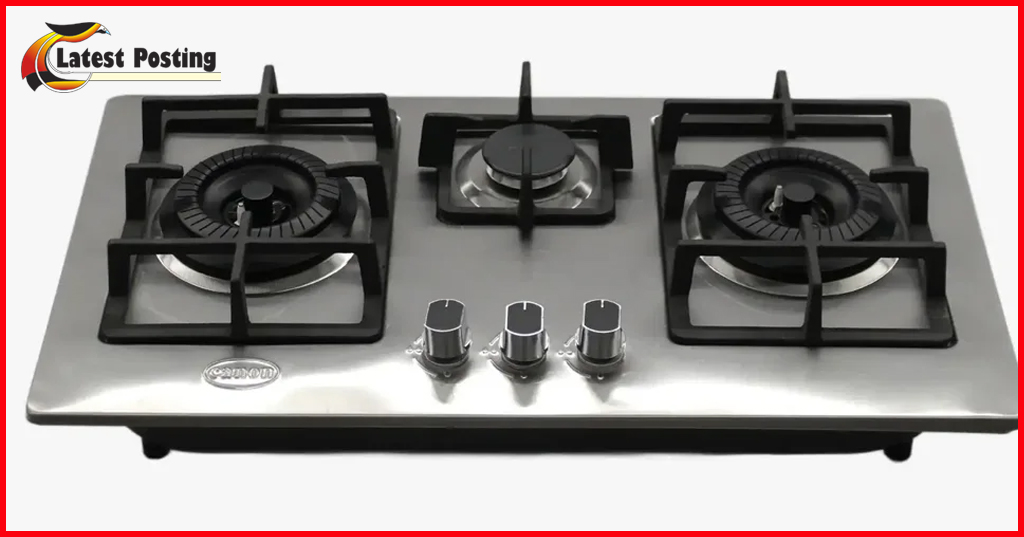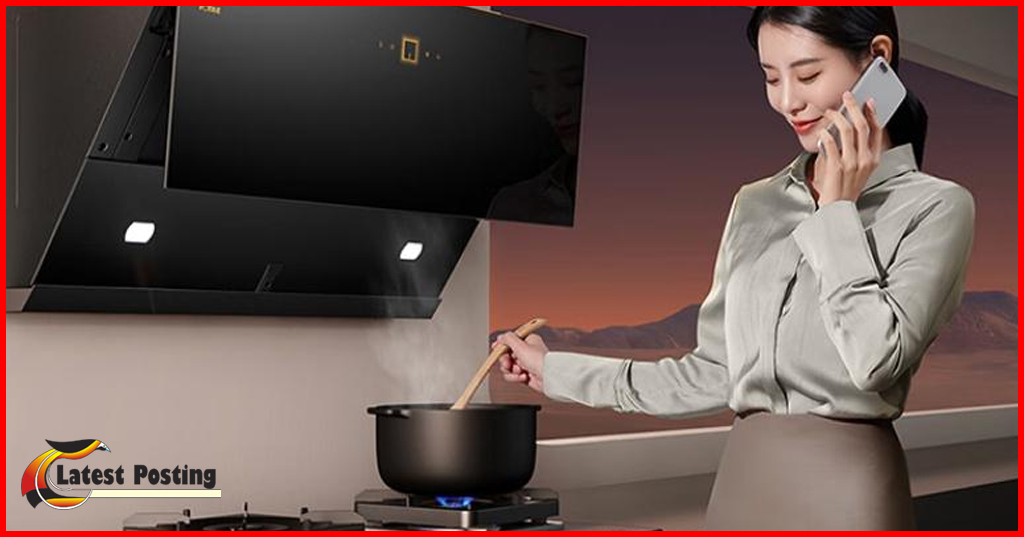How to choose a household gas stove? What brand of gas stove is easy to use? What cost-effective gas stoves are worth recommending? Today’s article will take you to learn about gas stoves, and also share with you several easy-to-use gas stoves. Don’t miss it if you like it!
Recommended front-row gas stoves:
FOTILE 02-TH33B
Speaking of upgrades, let’s talk about its firepower first. The firepower of the new model has been increased from 4.2kw to 4.5kw , making cooking faster and more time-saving! For those friends who want to replace their stoves, this product is simply good news. It has an awesome adjustable chassis design , with a length that can be adjusted between 630-680mm and a width that can be adjusted between 330-370mm. This means that you don’t have to bother remodeling your kitchen anymore, you can just install it and use it, how convenient! When it comes to cost-effectiveness, this product is definitely the ” fighter among 100-yuan stoves “! And there is a five-year warranty for the whole machine , even the wearing parts are included, which makes it more secure to use. Let’s take a look at its detailed design. The steel pot bracket weighs 513g.
The outer ring fire cover is made of 218g of brass, the inner ring fire cover is made of 63g of brass, and the knob is made of 44.6g of zinc alloy. The wide-brimmed anti-blocking fire cover design and the concave guide groove make ignition easy and safe. The design of the L-shaped insulated corner pot holder is so thoughtful! It can effectively insulate, the knob is not hot, and the cooking experience is instantly improved. Safety is also perfect! The integrated sealed burner base can prevent soup from flowing into the stove , and the 6-layer explosion-proof glass panel is sturdy and durable, greatly extending the service life.
1. Types
There are many types of gas stoves on the market, each with its own characteristics to meet different kitchen needs, including single-burner stoves, electric combination stoves, double-burner stoves and three-burner stoves. Today, we will analyze the pros and cons of these cooking warriors in detail and understand why some types are gradually disappearing from the stage of history. First of all, single-burner stoves and electric combination stoves, these two types of gas stoves have a low applicability and their usage rate in modern households has dropped significantly, and they are gradually being eliminated from the market.
Single-burner stoves , as the name suggests, only have one burner, which limits the possibility of multi-tasking cooking. For modern families who like to keep busy with several pots at the same time, it is obviously not enough.
Although electric combination stoves attempt to increase flexibility by combining electric heat and gas cooking, they often fail to meet the needs of most families due to design and efficiency issues.
The double-burner stove is the “gold medal salesman” of household gas stoves. It is equipped with two independent burners and can handle two dishes at the same time, greatly improving cooking efficiency. Its popularity is high not only because of its practical functions, but also because its economy and applicability perfectly meet the cooking needs of most families. Whether it is frying vegetables and boiling soup at the same time, or preparing main dishes and side dishes at the same time, the double-burner stove can do it with ease.
As for the three-burner stove , although it sounds more convenient at first – after all, who doesn’t like more cooking options? However, it turns out that its market demand is far less than expected. The extra burner of the three-burner stove is not often used in daily use and often becomes a decoration. Unless it is a family with particularly high cooking needs, most families will find that the three-burner stove not only takes up space, but is also not economical in terms of cost and energy use.
Therefore, when choosing a gas stove, we should consider not only cooking habits, but also kitchen space, budget and energy efficiency. A two-burner stove is undoubtedly the best choice for most families, as it balances functionality, economy and practicality. For families with more complex cooking needs or more family members, a three-burner stove is also acceptable, but it is a rare choice.
2. Materials of fire and fire distributor
When it comes to the choice of burners and distributors, one of the core components of gas stoves, there are three main materials on the market: pure copper, aluminum alloy and cast iron. Each material has unique properties and advantages and disadvantages, and understanding these can help you make a choice that better suits your kitchen needs.
Pure copper:
Pure copper stoves and burners are known for their excellent thermal conductivity and heat dissipation, which ensure efficient and uniform combustion. Copper also has excellent high temperature resistance, with a melting point of up to 1083°C, which makes it stable in long-term high-temperature cooking environments. In addition, pure copper also has good corrosion resistance and can resist erosion caused by steam and oil smoke common in the kitchen. Therefore, pure copper is an ideal material for stoves and burners, especially for kitchens with high frequency of use.
Aluminum alloy:
Aluminum alloy is another common material. Although its thermal conductivity and heat dissipation are slightly inferior to pure copper, it has advantages in cost and weight. Aluminum alloy has a low high temperature resistance, about 600°C, which is sufficient for ordinary home cooking. Aluminum alloy is light in texture and easy to process and form, but its corrosion resistance is not as good as pure copper, and long-term use may require more frequent maintenance and replacement.
Cast iron:
As a traditional material, cast iron has good high temperature resistance and sturdiness. However, the main disadvantage of cast iron is that it is easy to rust, especially in a humid kitchen environment. Rust not only affects the appearance of the distributor, but also may cause clogging of the pores, thus affecting combustion efficiency and safety. Although cast iron has a lower cost, it may cause more trouble in use and maintenance.

In addition, when buying a fire-dispensing device, you need to pay attention to the issue of genuine and fake copper materials on the market. Some unscrupulous merchants may use inferior materials or forge material logos, so when purchasing, you should choose a reputable brand and pay attention to checking the material certification and quality standards of the product.
In short, choosing the right stove and flame divider material not only affects the cooking effect, but also directly affects the safety and durability of use. Understanding the performance of various materials and making wise choices based on your actual needs will help you have a more enjoyable and efficient cooking experience in the kitchen.
3. Safety devices
When choosing a qualified gas stove, the configuration of safety equipment is an important factor that cannot be ignored. To ensure the safety and convenience of the family, modern gas stoves are usually equipped with child lock devices and flameout protection devices. Both functions are to prevent accidents and protect the safety of family members, especially children.
The main function of the child lock device is to prevent children from accidentally operating the gas stove out of curiosity, which is especially important for families with children. By setting a child lock, children can be effectively prevented from turning on the gas stove without adult supervision, thereby preventing possible dangers.
The flameout protection device automatically cuts off the gas supply when the flame is accidentally extinguished to prevent the leakage of unburned natural gas and possible fire or explosion. This function is especially important when the flame is extinguished by wind or soup overflow in the kitchen.
In terms of the choice of flameout protection devices, there are three main types on the market:
Thermal:
This type of device has been basically eliminated because the response speed and reliability cannot meet the safety needs of modern kitchens.
Thermocouple type:
This is the current mainstream configuration. Its working principle is to control the gas supply by detecting the temperature of the flame, ensuring that the gas source is quickly cut off when the flame goes out. Although its response speed is slightly slower than the ion type, its stability and reliability make it a widely used choice.
Ion type: usually used in high-end gas stove models. This device is known for its fast response (usually cuts off the gas supply within 1 second) and high reliability. Although it is more expensive, its performance in providing maximum safety protection is undoubtedly the best.
In addition, the material of the protective device is also a consideration, including:
Copper Clad Sensor Pin: This is the best quality option as copper is not only rust-resistant, but also provides a long lifespan.
Stainless Steel Coated Sensing Pin: Although slightly inferior to copper in terms of corrosion resistance, it is also a sturdy and reliable choice.
Iron-clad sensor pins: These are the most susceptible to damage, rust, and have a shorter lifespan. They are usually the lower-cost option.
When choosing a gas stove, you should not only consider cooking performance, but more importantly, safety performance. A good gas stove should be able to meet daily cooking needs and ensure safety during use. Therefore, it is crucial to reasonably choose the type and material of the device to ensure kitchen safety.
4. Panel material
If you don’t pay close attention, you may not notice the subtle differences in the materials of gas stove panels on the market. Common panel materials include tempered glass, stainless steel and ceramic.
Tempered glass panel:
Advantages: Excellent corrosion resistance, beautiful appearance, easy to clean, high temperature resistance, and relatively long service life.
Disadvantages: Although the overall structure is strong, the corners are easily damaged and may break once subjected to a strong impact.
Ceramic panel:
Advantages: elegant appearance, easy to clean, good corrosion resistance.
Disadvantages: relatively poor high temperature resistance, low load-bearing capacity, and usually higher prices.
Stainless steel panel:
Advantages: high temperature resistance, long service life and good safety performance.
Disadvantages: Compared with tempered glass and ceramics, it is slightly less beautiful and less corrosion-resistant.
In terms of price, gas stoves over 1,500 yuan usually use tempered glass panels, which are not only beautiful but also comprehensive in function. Gas stoves below 1,500 yuan may use tempered glass or stainless steel panels.
Going further, tempered glass panels can be broken down into:
Ordinary tempered glass: lower cost, but less impact-resistant and more easily broken.
Explosion-proof tempered glass: Improved impact resistance, relatively high price, but significantly improved quality and safety.
Other variations of tempered glass include soda-lime ion tempered glass and gold sand tempered glass, which offer different visual effects and strength properties.
For stainless steel panels, the common types on the market are 201, 304 and 316, among which 304 stainless steel is widely recommended for household gas stoves due to its excellent corrosion resistance. The thickness of high-quality stainless steel panels should be at least 0.3mm, and higher-quality products can reach 0.4mm or 0.5mm. If your budget is less than 1,000 yuan, it is recommended to consider stainless steel panels instead of tempered glass. Low-priced tempered glass may have defects in strength and thickness, and may pose safety hazards when used in high-temperature environments for a long time.
5. Ignition method
When choosing a gas stove, understanding the different ignition methods is essential to ensure ease of operation and practicality. There are two main ignition methods for gas stoves on the market: pulse ignition and pressure ceramic ignition, each with its own unique advantages and limitations.
Pulse ignition:
Pulse ignition relies on electronic devices to generate high-frequency electrical pulses, which release small sparks through the ignition needle to ignite the gas.
Advantages: The biggest advantage of this ignition method is its high efficiency. The ignition success rate is usually higher than 90%, and it can ignite the flame quickly and accurately.
Disadvantages: Pulse ignition requires batteries or an external power source to generate electrical pulses, which means that users need to check and replace batteries regularly to keep the gas stove working properly.
Pressure Ceramic Ignition:
The ignition method utilizes the piezoelectric effect. When mechanical pressure acts on the ceramic material, it generates a voltage, which in turn produces enough electric spark to ignite the gas.
Advantages: The significant advantage of pressure ceramic ignition is that it does not require batteries or external power, which reduces maintenance costs and the risk of unexpected downtime. In addition, this method is environmentally friendly and reliable, suitable for users who pursue simple operation and long-term durability.
Disadvantages: Compared with pulse ignition, the success rate of pressure ceramic ignition is slightly lower, and sometimes it may take multiple attempts to successfully ignite.
Choosing the right ignition method is not only a matter of personal preference, but also depends on the usage scenario and the degree of acceptance of equipment maintenance. For example, for users who cook frequently or need to ignite quickly, pulse ignition may be more suitable. For those who prefer low maintenance and environmental protection, pressure ceramic ignition may be a better choice. When choosing a gas stove, understanding these technical details will help you make a more informed decision and ensure that the product you buy can meet your cooking needs and lifestyle.
6. Air intake method
When choosing a gas stove, it is crucial to understand the air intake method, as it directly affects combustion efficiency, energy use, safety, and the thermal environment of the kitchen. There are three common air intake methods for gas stoves on the market: full air intake, top air intake, and bottom air intake. Each method has its own characteristics and corresponding application scenarios.
Full air intake:
Features: This air intake method allows air to enter the stove from multiple directions, achieving full mixing of gas and air.
Advantages: Full air intake provides the best combustion efficiency and can achieve the highest heat load, which means that more heat energy can be generated under the same gas consumption. This method also helps save energy and improve safety because sufficient combustion reduces the emission of harmful gases.
Applicable scenarios: The full air intake method is suitable for kitchen environments that require high efficiency and high safety standards, such as restaurants and places where fast and large-scale cooking is often required.
Upward air intake:
Features: Air enters from the top of the cooker and mixes directly with the gas.
Advantages: The upper air intake mode can also achieve good combustion efficiency. Although it is slightly inferior to the full air intake mode, it can still maintain high energy efficiency and safety.
Applicable scenarios: The upper air intake mode is more suitable for home kitchens and those environments that do not require extremely efficient combustion but still focus on cooking effects.
Downward air intake:
Features: Air enters from the bottom of the cooker and rises to mix with the gas.
Disadvantages: This method may result in poor flame stability and sometimes drifting flames, that is, the flame moves due to the influence of wind.
Applicable scenarios: Despite some drawbacks, downdraft gas stoves still have application value in certain low-cost or space-constrained kitchen settings.
Overall, the full air intake method has an advantage in providing the best combustion performance and the highest safety, and is the first choice for high-end kitchens and professional occasions. The upper air intake is a choice that balances performance and cost, and is very suitable for home use. Although the lower air intake can still be used under certain conditions, users need to pay more attention to the stability and safety of the flame during use. Choosing the right air intake method can not only improve cooking efficiency, but also ensure safety and economy during use.
7. Shell bottom
When choosing a gas stove, the material and structure of the bottom shell are often overlooked details, but these factors have a significant impact on the durability and safety of the gas stove. The bottom shell not only supports the entire stove body, but also directly affects the service life and maintenance requirements. Usually, the material of the bottom shell mainly has two options: iron sheet and galvanized.
Iron bottom shell:
Features: Iron sheet is a common material with low price, but its main disadvantage is that it is easy to rust.
Problem: Once rust begins to form, the structural integrity of the iron pan will gradually be compromised, reducing its load-bearing capacity and overall stability. This is especially noticeable after one to two years of use.
Galvanized bottom shell:
Features: Galvanized material has stronger load-bearing capacity and hardness, and more importantly, it has excellent anti-rust performance.
Advantages: Due to these properties, galvanized sump provides longer service life and lower maintenance requirements.
In addition to the material, the structure of the bottom shell is also an important factor that must be considered when choosing a gas stove, which is mainly divided into full-enclosed structure and semi-enclosed structure.
Fully wrapped structure: This structure completely wraps around the bottom of the stove body, which can significantly enhance the overall structural stability and load-bearing capacity. It helps to evenly distribute the weight of the cookware, thereby reducing the risk of panel damage.
Half-wrapped structure: In comparison, the half-wrapped structure provides less support and cannot effectively assist the panel in bearing weight, which may make the panel more susceptible to damage.
Regarding the internal structure, although we often cannot directly observe these details when purchasing, it is still helpful to know this information:
Direct plug-in structure: The internal pipes and wires of this structure are more messy, which may affect safety performance. However, high-quality direct plug-in designs will use galvanized plates in key areas for added protection.
Full pipe structure: usually used in high-end gas stoves, characterized by neat and standardized internal pipes and wires, which improves safety and easy maintenance.
In short, understanding the material and structure of the bottom shell is crucial to choosing a durable and safe gas stove. These seemingly insignificant details can actually significantly affect the performance and service life of the gas stove.
8. Recommendation of cost-effective gas stoves
FOTILE 02-TH27B
This stove is definitely a perfect combination of high firepower and precise fire control. Whether you want to upgrade your old stove at home or are renovating a new house, it is your best choice. Speaking of this 02-TH27B, it is actually an upgraded version of the old Fotile model. At first glance, the appearance may not have changed much, but don’t be fooled by the appearance! It has upgraded five-layer tempered glass panels, plus the design of the full facade enclosure, the gas saving effect is great!
In terms of firepower, it is really awesome! From 0.38kW to 5.2kW, multiple gears of fine adjustment and delicate control, it is simply a “Transformer” in the kitchen. Whether you want to slow cook soup or stir-fry over high heat, it can handle it easily. The chassis can also be adjusted, which is super convenient to change. However, what I want to share with you most is its hot pot stand. This stand is so cleverly designed. The “M”-shaped structure not only gathers energy and insulates, but also effectively prevents the pot from tipping over. It is really good news for hot pot lovers!
FOTILE TE21 Air Chamber Gas Stove
FOTILE TE21 uses aerospace-grade hollow insulation technology, so you can enjoy high firepower without worrying about being “burned” by the heat wave. It is really good news for friends who love stir-frying! The pot support of TE21 uses a stainless steel base material and rhenium crystal rare earth enamel. After 800℃ high-temperature enamel treatment, the surface is as smooth as a mirror. There is nowhere for oil to hide, and it is easy to wipe. No more headaches about cleaning problems!
When it comes to firepower, TE21 is definitely a powerhouse. With a powerful firepower of 5.2kW and a high thermal efficiency of 65%, it is also a first-class energy efficiency, which saves both time and gas. Cooking rice and frying vegetables can be done in minutes! Oh, by the way, there is also a super considerate design – the timing function. You no longer have to worry about overcooking porridge or stewing soup for too long. Set the time and do other things with peace of mind. It is so convenient!
VATTI gas stove JZT-i10080B
The obsidian black exterior design is so stylish, and the black crystal tempered glass panel is not only beautiful, but also very easy to clean. The X-shaped pot support with a panel is also very considerate, and the residue and liquid can be easily discharged, and there is no dead corner for cleaning. Speaking of firepower, this gas stove is a tough guy! With a high fire output of 5.0kW, you can cook a dish in 10 minutes with fierce fire and high temperature stir-fry. The design of the wide suspended fire distributor and wide-diameter ejector tube allows for more complete combustion, and the effect is awesome!
Good news for lazy people! It also has a timing function. The left and right burners can be set separately, up to 99 minutes. You no longer have to worry about overcooking the porridge. You can free your hands and enjoy the delicious food as promised. It’s so cool! Don’t underestimate this little guy. Its thermal efficiency is as high as 63%, reaching the first-level energy efficiency standard. It can save money and gas while contributing to environmental protection. It is a must-have for home! The safety aspect is also impeccable. The thermocouple flameout protection device can automatically cut off the gas source in the event of an accidental flameout, and the safety child lock design can also prevent children from misoperating. With it, you can enjoy the fun of cooking with peace of mind!
Supor PB15
The 5.2KW blue flame makes a sizzling sound when cooking. Whether it is stir-frying green peppers or frying steak, it can be easily done. Its triple three-dimensional air intake design is really clever, and the firepower is rising. Let’s talk about its thermal efficiency, which is as high as 63%! This means more money and gas, which is friendly to the wallet and the environment. The cooking time is shortened, but the quality of the dishes is improved. It is simply a must-have artifact at home.
In terms of fire control, the 230° wide-range fire control technology is really considerate. Whether it is making soup or frying eggs, the heat is controlled just right. From stir-frying over high heat to slow cooking over low heat, you can do whatever you want and easily cope with various cooking needs. The appearance design is also great, and the tempered glass panel is both fashionable and easy to care for. Whether your home is modern and simple or pastoral style.
It can be perfectly integrated. Every time you wipe it, it feels like touching a work of art, and you can’t put it down! Finally, the safety performance is also top-notch. The flameout protection device makes me feel particularly at ease, and I no longer have to worry about running to chase TV series while cooking. The multiple explosion-proof design makes me feel that there is an extra layer of safety at home.




